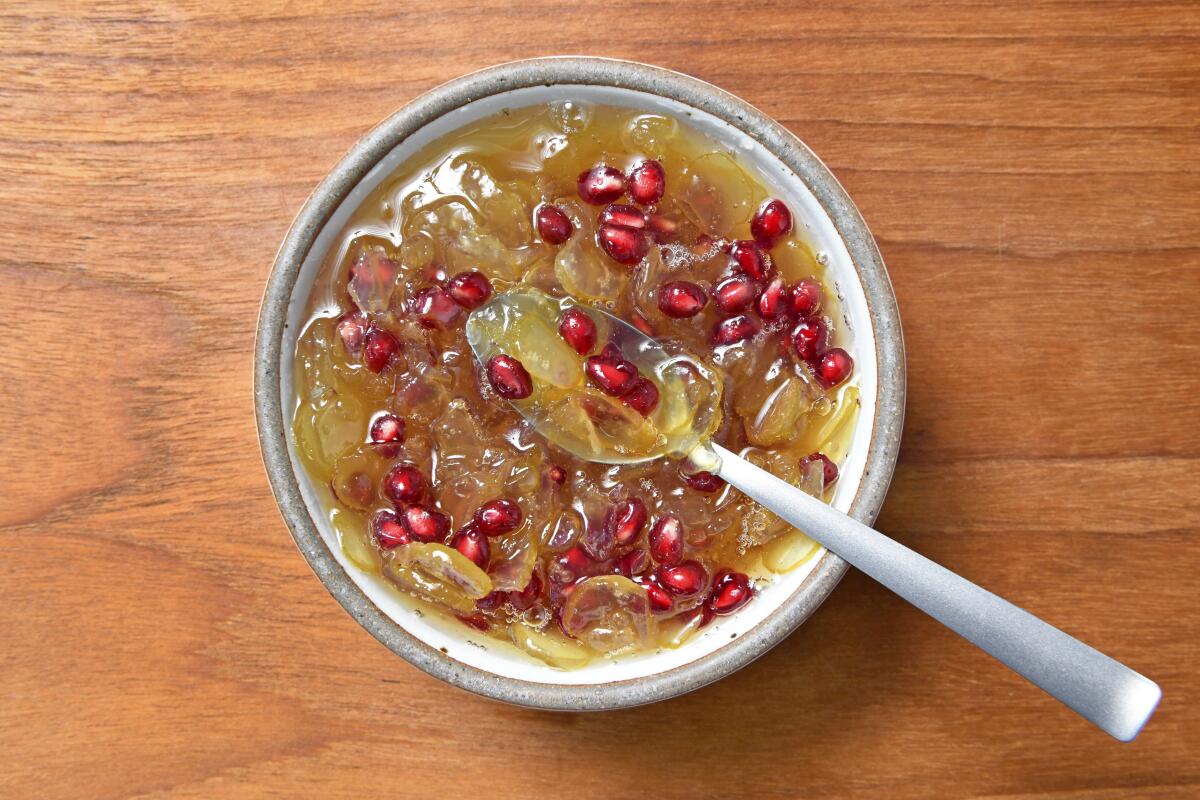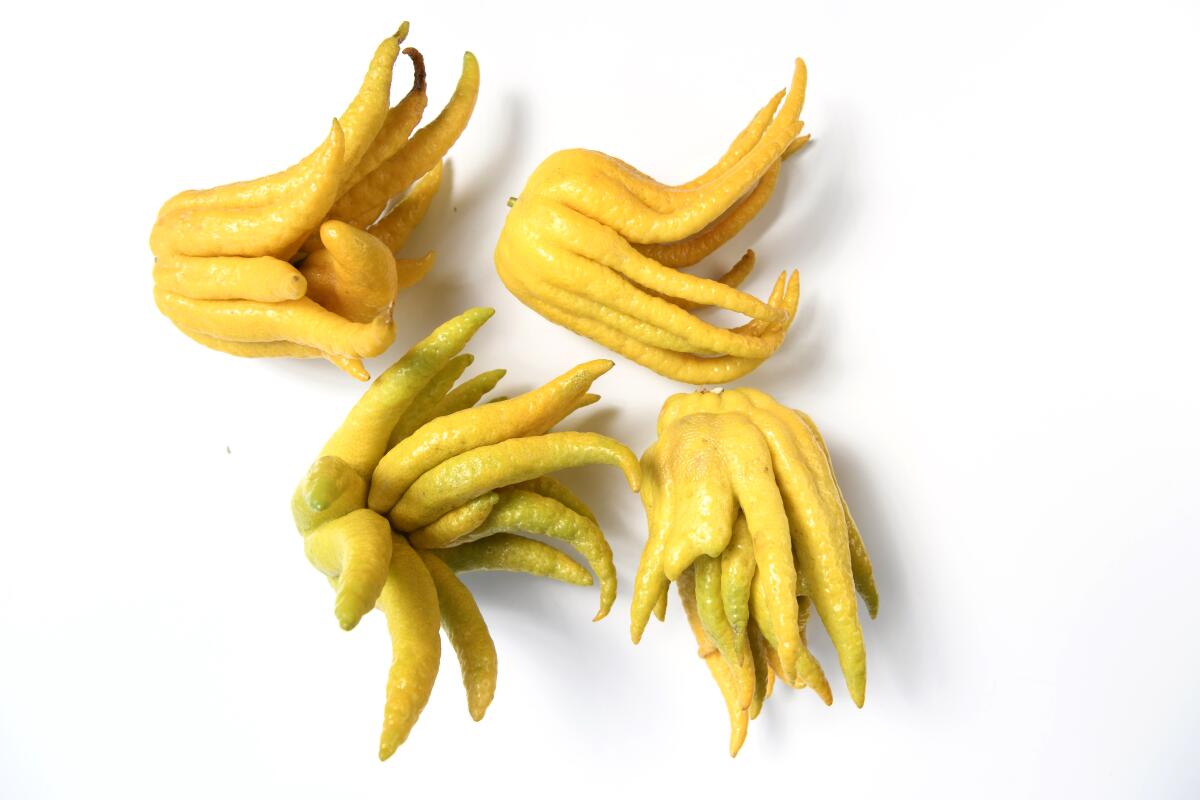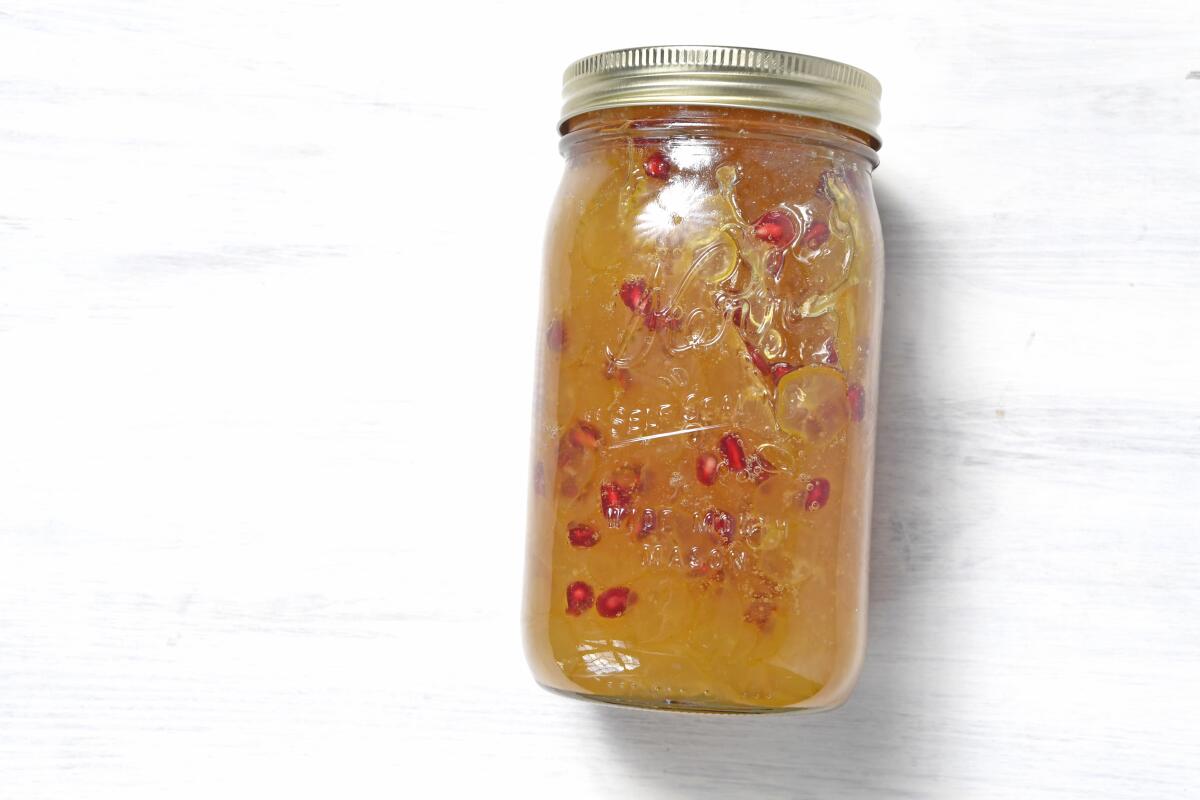The Zen art of making Buddha’s hand marmalade

There are few things as alien-looking as a Buddha’s hand. Most people I’ve talked with have never even heard of it or seen it, and when I show them a picture, they scream in terror.
A variety of citron (that stuff that’s candied and chopped up to make European fruit cakes), Buddha’s hand is distinguishable by its characteristic “fingers” that protrude from its base in a fashion I find whimsical but most find creepy. Unlike other citrus, where the juicy, sweet fruit is encapsulated by a white pith of varying degrees of thickness and a thin coating of fragrant zest, Buddha’s hand is all bitter white pith with intensely aromatic yellow zest, weaving its way over the peaks and valleys of the fruit’s appendages.

I’ve often zested the fruit and used it in salad dressings, over roast chicken and in place of lemon in sugar cookies or almond cakes. But recently, after a hankering for marmalade, which relies on the bitterness of citrus pith to balance all the sugar that goes into it, I decided to see whether the pith-full Buddha’s hand was an even better candidate than the traditional orange or grapefruit.
Slicing the Buddha’s hand on a mandoline produced delightful disks of fragrant pith, perfectly sized for fitting inside a spoon when doling out the marmalade.
Our first annual collection of 12 L.A.-inspired holiday cookies.
I boiled the fruit for half an hour to ensure most of its bitterness was gone, then stirred in sugar with Meyer lemon zest and juice to add more fragrance and tang. The marmalade was bright and floral, but still a touch too sweet. Being a marmalade, it should be sweet, but I found last-minute inspiration in the pomegranates sitting on my kitchen counter.
After cooking the marmalade to the perfect consistency, I let it cool, then stirred in pomegranate seeds. Suspended in the floating finger citrus jelly, they look like jewels and add surprising pops of acidity. Eating the marmalade is a delightful experience, all the better knowing the grotesquely beautiful fruit from which it’s made.

Buddha’s Hand Marmalade
A mandoline makes quick work of slicing the irreverently shaped Buddha’s hand, so buy one (you can use it to slice dozens of other vegetables and fruits for salads). If you have Meyer lemons, use those for their sweet-tart flavor, but regular lemons work just as well. Pomegranate seeds, while not essential, provide bursts of acidity as you eat the marmalade.
Ingredients
- 2 pounds Buddha’s hand, washed
- 7 cups granulated sugar
- 1 teaspoon kosher salt
- 4 Meyer lemons or regular lemons
- 1 cup pomegranate seeds
Instructions
- Using a mandoline or sharp chef’s knife, thinly shave the Buddha’s hand, starting with the tips of the tentacles and slicing until you reach the large core. Quarter the core lengthwise and continue slicing the rest of the Buddha’s hand. Transfer the slices to a large saucepan and cover with 6 cups water.
- Bring the water to a boil over high heat, then reduce the heat to maintain a steady simmer and cook, covered, for 30 minutes.
- Uncover and stir in the sugar and salt. Using a microplane zester, zest two of the lemons directly into the pot. Juice all four lemons and measure out 3/4 cup juice. Pour the juice in and stir to combine all ingredients.
- Increase the heat to medium-high and attach a candy or deep-fry thermometer to the side of the pot. Cook, stirring occasionally, until the marmalade reaches 220 to 222 degrees on the thermometer, 20 to 24 minutes.
- Remove the pan from the heat and let the marmalade cool to room temperature. Stir in the pomegranate seeds, then transfer the marmalade to clean glass jars and seal. Refrigerate the marmalade for up to 1 month or process according to canning standards.
More to Read
Eat your way across L.A.
Get our weekly Tasting Notes newsletter for reviews, news and more.
You may occasionally receive promotional content from the Los Angeles Times.








